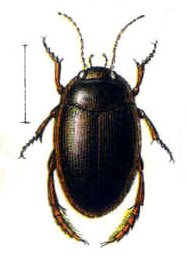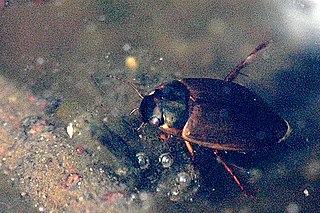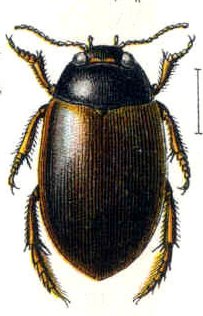
A mammoth is any species of the extinct elephantid genus Mammuthus, one of the many genera that make up the order of trunked mammals called proboscideans. The various species of mammoth were commonly equipped with long, curved tusks and, in northern species, a covering of long hair. They lived from the Pliocene epoch into the Holocene at about 4,000 years ago, and various species existed in Africa, Europe, Asia, and North America. They were members of the family Elephantidae, which also contains the two genera of modern elephants and their ancestors. Mammoths are more closely related to living Asian elephants than African elephants.

Beringia is defined today as the land and maritime area bounded on the west by the Lena River in Russia; on the east by the Mackenzie River in Canada; on the north by 72 degrees north latitude in the Chukchi Sea; and on the south by the tip of the Kamchatka Peninsula. It includes the Chukchi Sea, the Bering Sea, the Bering Strait, the Chukchi and Kamchatka Peninsulas in Russia as well as Alaska in the United States and the Yukon in Canada.
Polybrominated diphenyl ethers or PBDEs, are a class of organobromine compounds that are used as flame retardants. Like other brominated flame retardants, PBDEs have been used in a wide array of products, including building materials, electronics, furnishings, motor vehicles, airplanes, plastics, polyurethane foams, and textiles. They are structurally akin to polychlorinated diphenyl ethers (PCDEs), polychlorinated biphenyls (PCBs) and other polyhalogenated compounds, consisting of two halogenated aromatic rings. PBDEs are classified according to the average number of bromine atoms in the molecule. The health hazards of these chemicals have attracted increasing scrutiny, and they have been shown to reduce fertility in humans at levels found in households. Because of their toxicity and persistence, the industrial production of some PBDEs is restricted under the Stockholm Convention, a treaty to control and phase out major persistent organic pollutants (POPs).

Dwarf elephants are prehistoric members of the order Proboscidea which, through the process of allopatric speciation on islands, evolved much smaller body sizes in comparison with their immediate ancestors. Dwarf elephants are an example of insular dwarfism, the phenomenon whereby large terrestrial vertebrates that colonize islands evolve dwarf forms, a phenomenon attributed to adaptation to resource-poor environments and selection for early maturation and reproduction. Some modern populations of Asian elephants have also undergone size reduction on islands to a lesser degree, resulting in populations of pygmy elephants.

The pygmy mammoth or Channel Islands mammoth is an extinct species of dwarf elephant descended from the Columbian mammoth of mainland North America. This species became extinct during the Quaternary extinction event in which many megafauna species became extinct due to changing conditions to which the species could not adapt. A case of island or insular dwarfism, from a recent analysis in 2010 it was determined that M. exilis was on average, 1.72 m (5.6 ft) tall at the shoulders and 760 kg (1,680 lb) in weight, in stark contrast to its 4.3 m (14 ft) tall, 9,070 kg (20,000 lb) ancestor. Another estimate gives a shoulder height of 2.02 m (6.6 ft) and a weight of 1,350 kg (2,980 lb).

Lamium album, commonly called white nettle or white dead-nettle, is a flowering plant in the family Lamiaceae. It is native throughout Europe and Asia, growing in a variety of habitats from open grassland to woodland, generally on moist, fertile soils.

The fauna of Ireland comprises all the animal species inhabiting the island of Ireland and its surrounding waters.

Suillellus luridus, commonly known as the lurid bolete, is a fungus of the family Boletaceae, found in calcareous broadleaved woodlands in Europe. Fruit bodies appear in summer and autumn and may be locally abundant. It is a firm bolete with an olive-brown cap up to 20 cm (8 in) in diameter, with small orange or red pores on the underside. The stout ochre stem reaches 8–14 cm (3–6 in) high and 1–3 cm (0.4–1.2 in) wide, and is patterned with a red network. Like several other red-pored boletes, it stains blue when bruised or cut.

The woolly mammoth is an extinct species of mammoth that lived during the Pleistocene until its extinction in the Holocene epoch. It was one of the last in a line of mammoth species, beginning with Mammuthus subplanifrons in the early Pliocene. The woolly mammoth began to diverge from the steppe mammoth about 800,000 years ago in East Asia. Its closest extant relative is the Asian elephant. DNA studies show that the Columbian mammoth was a hybrid between woolly mammoths and another lineage descended from steppe mammoths.

Agabus affinis is a species of beetle native to the Palearctic and the Near East. In Europe, it is only found in Austria, Belarus, Belgium, Great Britain including Shetland, Orkney, Hebrides and Isle of Man, Croatia, the Czech Republic, mainland Danmark, Estonia, Finland, mainland France, Germany, Hungary, the Republic of Ireland, mainland Italy, Kaliningrad, Latvia, Lithuania, Northern Ireland, mainland Norway, Poland, Russia except the South, Slovakia, Sweden, Switzerland, the Netherlands, Ukraine, and Italy.

Agabus fuscipennis is a species of beetle native to the Palearctic and the Nearctic. In Europe, it is only found in Austria, Belarus, the Czech Republic, mainland Denmark, Estonia, Finland, Germany, mainland Italy, Kaliningrad, Latvia, Lithuania, mainland Norway, Poland, Russia, Sardinia, Sicily, Slovakia, Sweden, and Ukraine.

Agabus melanarius is a species of beetle endemic to Europe, where it is only found in Austria, Belgium, Bosnia and Herzegovina, Great Britain, Bulgaria, the Czech Republic, mainland Denmark, Estonia, Finland, mainland France, Germany, Hungary, mainland Italy, Kaliningrad, Lithuania, Luxembourg, mainland Norway, Poland, Russia except in the East, Sardinia, Slovakia, Sweden, Switzerland, the Netherlands, Ukraine and Yugoslavia.

Agabus striolatus is a species of beetle endemic to Europe, where it is only found in Austria, Belarus, Belgium, Great Britain including Shetland, Orkney, Hebrides and Isle of Man, Croatia, the Czech Republic, mainland Denmark, Estonia, Finland, mainland France, Germany, Hungary, mainland Italy, Latvia, Lithuania, Poland, Russia except in the East, Slovakia, Sweden, the Netherlands and Ukraine.

Agabus sturmii is a species of beetle native to the Palearctic and the Near East. In Europe, it is only found in Austria, Belarus, Belgium, Bosnia and Herzegovina, Great Britain including Shetland, Orkney, Hebrides and Isle of Man, Bulgaria, Croatia, the Czech Republic, mainland Denmark, Estonia, Finland, mainland France, Germany, Hungary, the Republic of Ireland, mainland Italy, Kaliningrad, Latvia, Lithuania, Luxembourg, Northern Ireland, North Macedonia, mainland Norway, Poland, Russia, Slovakia, Slovenia, mainland Spain, Sweden, Switzerland, the Netherlands and Ukraine.

Agabus uliginosus is a species of beetle native to the Palearctic, including Europe, where it is only found in Austria, Belarus, Belgium, Great Britain including Shetland, Orkney, Hebrides and Isle of Man, Croatia, the Czech Republic, mainland Denmark, Estonia, Finland, mainland France, Germany, Hungary, Iceland, mainland Italy, Kaliningrad, Latvia, Lithuania, Luxembourg, mainland Norway, Poland, Romania, Russia, Slovakia, Slovenia, Sweden, Switzerland, the Netherlands, Ukraine and Yugoslavia.

Agabus undulatus is a species of beetle native to the Palearctic, including Europe, where it is only found in Albania, Austria, Belarus, Belgium, Bosnia and Herzegovina, Great Britain including Shetland, Orkney, Hebrides and Isle of Man, Bulgaria, Croatia, the Czech Republic, mainland Denmark, Estonia, mainland France, Germany, Hungary, mainland Italy, Kaliningrad, Latvia, Lithuania, Luxembourg, mainland Norway, Poland, Russia, Slovakia, Slovenia, Sweden, Switzerland, the Netherlands, and Ukraine.

The Mammoth Site is a museum and paleontological site near Hot Springs, South Dakota, in the Black Hills. It is an active paleontological excavation site at which research and excavations are continuing. The facility encloses a prehistoric sinkhole that formed and was slowly filled with sediments during the Pleistocene era. The sedimentary fill of the sinkhole contains the remains of Pleistocene fauna and flora preserved by entrapment and burial within a sinkhole. As of 2016, the remains of 61 mammoths, including 58 North American Columbian and 3 woolly mammoths had been recovered. Mammoth bones were found at the site in 1974, and a museum and building enclosing the site were established. The museum now contains an extensive collection of mammoth remains.

Gyrinus natator, the common whirligig beetle, is a species of beetle native to the Palearctic realm, including much of Europe. Its range extends northwards as far as Norway, Finland, and the Saint Petersburg area of Russia. It is an aquatic beetle and moves rapidly around on the surface or swims underwater in still or slow-moving fresh water.

The Snowmastodon site, also known as the Ziegler Reservoir fossil site, is the location of an important Ice Age fossil excavation near Snowmass Village, Colorado. Fossils were first discovered on October 14, 2010, during the construction of a 5 hectare reservoir to supply Snowmass Village with water. Over the subsequent weeks, after an agreement had been reached to allow paleontological excavation, crews from the Denver Museum of Nature & Science and the U.S. Geological Survey worked along with the construction crews as more fossil material was uncovered. The site closed for five months over the winter, reopening May 15, 2011. Between May 15 and July 4, 2011, crews from the Denver Museum of Nature & Science conducted a large scale fossil excavation alongside construction crews building a dam for the reservoir. In total over 36,000 vertebrate fossils, more than 100 species of fossil invertebrates and over 100 species of fossil plants were found in sediments deposited by an alpine lake during the last interglacial period.

The Mammutmuseum Niederweningen is a paleontological and geological museum in the municipality of Niederweningen in the Wehntal valley, Canton of Zürich, Switzerland, and one of the few mammoth museums in Europe.




















